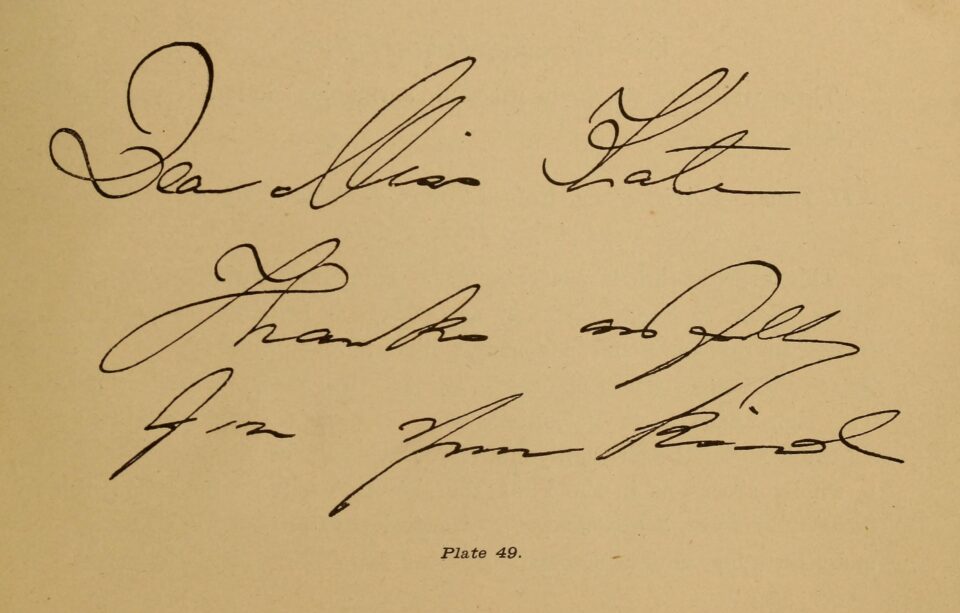Graphology claims that each handwriting is individual, just like our fingerprints, and an expert eye can read from it the personality of the person who put the words on the paper. It is able to tell if a person is suitable for certain jobs, who they are sexually attracted to, if they are prone to committing certain crimes or if they are compatible with their current partner. Unfortunately, they have not been able to prove all of these claims in the past two hundred years.
Before we get into the details, let’s quickly clarify that legal scribes are not graphologists, and when they are called that, they roll their eyes just as much as astronomers do when they are called astrologers. People working in court can tell (and do so fairly effectively) based on paper, ink, watermark, photo, and writing, whether the writer of a particular text is the same as the writer of another. This is because when we write, we rarely pay attention to how the letters bend, and there are automatic movements—such as the number of times we raise our pen—that are hard to alter, even if someone tried. This is how you can eliminate counterfeiters.
But the knowledge of a writing expert ends there. They will never say that the author of a particular text is, for example, a violent person, or a pedophil, or an optimist, or has good leadership skills. These are phrases that only come out of the mouths of calligraphers. However, they cannot prove their claim.
similarity principle
If you look at a graphology book, you will read definitions such as one whose writing is forward-leaning and is itself an optimistic and forward-looking character. Large spaces mean that the author of the text is an elusive person. However, the crowded writing says the opposite, it indicates that the person makes friends very easily and constantly craves company. If the margin is small, then the writer is shrinking, and if the lines are facing down, then he is prone to depression. Those who use uppercase letters are clearly dominated by their ego, if they use lowercase letters, they tend to underestimate themselves. If the writing style is orderly, the writer will be pedantic, but people with disorganized and jumbled writing also have a confusing environment.
The Liars’ letters have rings on the inside, and the letters “a” and “o” are open, like their wallets. And if someone has lumps in their letters, they’re prone to tumors, or even sick—at least according to graphologists. “This all makes a lot of sense on the surface, as we all have ideas when we look at someone’s handwriting. We tend to think of rounded letters as writing for creators and artists, and we associate more structured writing with pretentiousness. But these associations aren’t necessarily real.”
However, the graphologists, based on the apparent links, promise clear answers, such as whether the author of the text will go to work regularly, does he have a secret eccentricity, will he not steal from his workplace?
In addition, they say their claims have a scientific basis. But this is not true, ”explains Andras Pinter, President of the Skeptics Association.
Exclusivity doesn’t mean much
Graphologists argue that since writing is controlled by the brain, it must be related to our personality. It sounds logical – but this argument is actually very uncertain, because it’s not really clear what kind of connection they’re thinking about inside the brain. Although we know exactly which area of the brain is responsible for fine motor skills (including writing), the areas of the brain responsible for various personality traits are no longer completely defined, and we don’t know any neural connections that would connect them with those responsible for writing.
Andras Pinter, President of the Skeptics Association
“In addition, writing can be consciously changed through practice – the chief skeptic draws attention to an important aspect. – “But the question arises: if we change our writing, will our character change too? According to this logic, if we choose the wrong letters, do we get worse? Maybe a murderer? liar? to shrink? cancer?”
The uniqueness of writing doesn’t mean much because people have many unique characteristics: everyone has different fingerprints, gait, posture, gestures, or faces, and it’s easy to identify each other based on that. But no one today believes that it will be possible to determine how smart, optimistic or angry a person is based on the appearance of their face. Just as the character of people cannot be read from the shape of the skull, although in the nineteenth century a whole branch of science was built on this phrenology. (However, society once benefited from phrenologists: when doctors of the time, at the end of the 19th century, tried to make women believe that cycling was harmful to their health – that is, only women – phrenologists also “experienced” the matter and came to the conclusion that this was not the case.)
Get into the spirit
What calligraphy flag Progress, in fact, is nothing more than an extension of medieval magical thinking based on parallels. The beautiful are good, and the ugly are evil. Graphology offers around many interpretations if you dig a little. The problem is not only that graphology sets a very broad framework for interpretations, and even those who practice it say it is a transition between “science and art,” but the characteristics they describe do not at all match the accepted character descriptions in psychology, which have been discredited by numerous experiments in recent years. Furthermore, they cannot explain the basis on which they come to their conclusions. What is the relationship between the letter crossed out and aggression? Or between curling the letter ag and sexual performance? Graphologists refer to them regularly, but cannot explain why.
There is a lot of uncertainty in graphology
– explains András Pintér, President of the Skeptics Association. – “For example, we all know that when we get tired, our handwriting becomes uglier. But graphology is no longer apt to tell us how tired we are by looking at our handwriting. It fails to prove even such very simple correlations. My writing has also changed a lot in the past ten years, because I rarely write by hand and prefer using a computer. But does that mean that my personality would have changed? I doubt such a connection exists.”

Photo: Getty Images
Search is missing
When it comes to believability, the majority of graphologists point to a nearly 45-year-old experiment showing that the writing of cancer patients differs from the writing of healthy people. At first, this seems like a huge result—but when they tried to replicate it and set stricter requirements for scientific credibility, it all went down the drain. For such an experiment to be really accurate, the healthy groups and the patients had to be of the same age, because not only is cancer more common among the elderly, but their writing is usually weaker and less active. But powerful medications taken for the disease can also affect writing style. In addition, the thing would only be useful if writing could be used to predict in advance who would have a tumor, and thus could lead to examinations, but it is not suitable for that either.
Graphology suffered its most sensational in 2005, when British graphologists meeting at the World Economic Conference were asked to analyze the writings of Prime Minister Tony Blair. Since Blair was very unpopular at the time and everyone knew he was about to resign, most analyzes have centered around the script writer as a reckless but unsuccessful man, unable to properly perform his duties, a bad leader, unstable and depressed. One analyst went so far as to see suicidal tendencies in the writing.
However, the manuscript sample was actually that of Bill Gates, the richest man in the world at the time, who had none of the above problems.
However, this comic relief raises very serious questions. Today, it happens that companies commission graphologists to find out who would be a good fit for a job, or banks use this to determine the creditworthiness of an applicant. There was an example of an entire faculty being asked to write a sample in order to filter out people who might be vulnerable to pedophilia, and it is common for couples to submit their writing together so that the “expert” can see if they are a match. If someone paid a lot of money for this information, you can expect to get a reliable answer.

According to the 1982 book Calligraphy Lectures: The Art of Knowing Personality Through Handwriting, this calligraphy is said to show the frivolous, frivolous, and vulgar nature of its writer (Photo: Wikipedia)
We like to believe
“We don’t have to prove ourselves! And thousands of satisfied customers prove that the method works, ”say many graphologists, but unfortunately this in itself is only proof of how powerful the “Barnum effect” is. This psychological phenomenon is named after circus performer P.T.Barnum, who The greatest showman She was also the main character of the musical of the same name, who said not only “Every minute a friend is born”, but also “I can give something to everyone.”
As humans, one of our most amazing abilities is the ability to filter the things that matter from the mass of information that surrounds us. Because that’s what we do all day, when we hear an analysis that’s vague enough, we automatically fill in the blanks. This is why every age feels like the prophecies of Nostradamus are about him, or the paper notes in the cookies speak to him personally. That is why we believe in palmistries, astrologers and graphologists, because a few ambiguous sentences are enough and our brain instantly fills in the blanks. Not that we are stupid and naive in fact! Paradoxically, the smarter a person is, the easier it is to fall victim to this phenomenon, because he completes the mosaic so efficiently and quickly that he doesn’t even notice it. So, it doesn’t matter if someone says something based on our writing, date of birth, or departure date — if we decide to trust that person, we’ll believe everything they say.
This is why we need science
Numerous experiments have shown that if you ask 10-15 people to write their own handwriting, and then give them an analysis and ask them if it suits them, the vast majority of them will answer yes. even if Everyone gets the same profile.
But if graphologists prepare an analysis that is personal and unique to everyone, mix them up and ask the participants in the experiment to choose any one of them, it will never work. But since these writings are so unique and personal, this should be very easy.
“We humans strive to see order in chaos, and we don’t like it when someone wants to change our view of the world.
It has often been shown that most people, when they hear evidence that contradicts their beliefs, will reject the evidence rather than change their mind.”
– András Pinter explains. “This is why it is so difficult to fight pseudoscience. Because they all provide simple, plausible and easy-to-understand explanations for the intricacies of life, unlike science, which is very complex and difficult for most people to understand. Moreover, unlike science, in pseudoscience it does not matter whether a phenomenon is real, only whether it is reasonably presented.”
Featured image: A graphologist gives a class on the basics of graphology in 1932 – Image: ullstein bild / ullstein bild via Getty Images












































